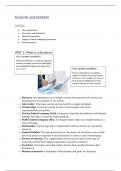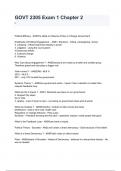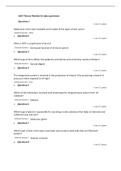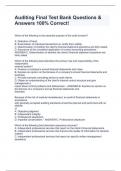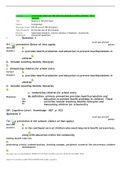Other
AQA ALEVEL Business Studies Unit 1 - Questions for revision
- Module
- What is a business?
- Institution
- AQA
Unlock Success with AQA Business A-Level! Dive into Unit 1: What is a Business? Key Terms and Definitions Get ahead with essential terminology: Business: Where goods and services meet money. Sole Trader: One-person operation. Partnership: Teamwork makes the dream work. Private ...
[Show more]
